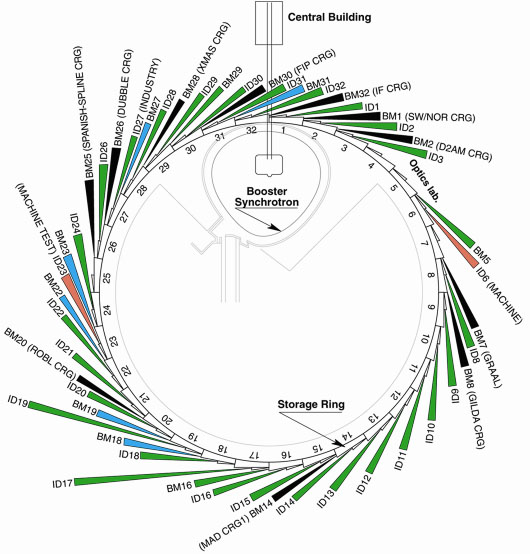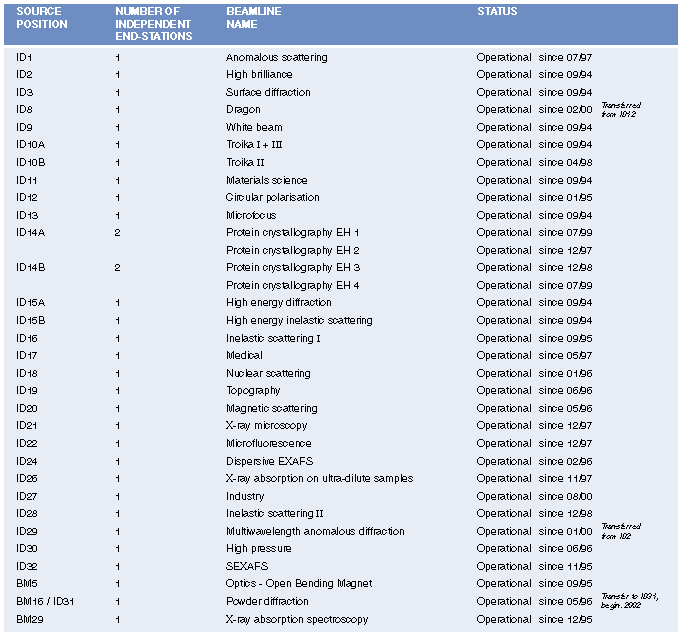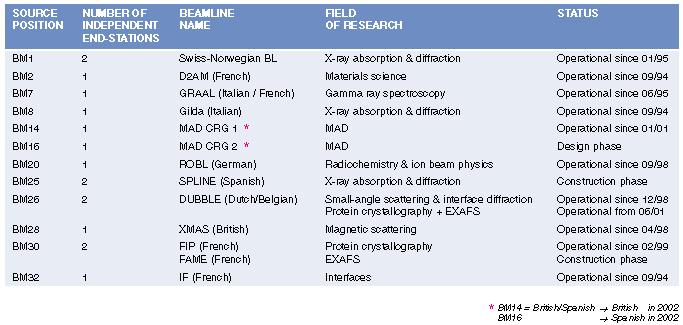The Beamlines
All thirty of the ESRF public beamlines have been operational since 1999. Two of these possess two end-stations, so there are thirty-four end-stations in total, which can be run independently. An additional fifteen beamline branches, situated on bending magnets, are devoted to Collaborating Research Groups (CRG). Ten of the CRG beamlines are now in operation (including GRAAL), the others are in the phases of planning, construction or commissioning. Figure 195 shows the location of the beamlines in the experimental hall; a list of the public beamlines is presented in Table 10; and a list of the CRG beamlines in Table 11.
Following management proposals, the Council decided in June 2000 that the MAD beamline BM14 will be operated jointly by British and Spanish CRG teams until the year 2002. By then the Powder Diffraction beamline will have been transferred from a bending magnet, BM16, to an insertion device, ID31. BM16 will then become a Spanish CRG line retaining full MAD capability and BM14 will become a completely British CRG.
Additionally, there is an industrial beamline, ID27, which is used for impurity analysis on silicon wafers. This line has capacity for further expansion to other fields of industrial interest.
 |
Fig. 195: Experimental hall with the operational and scheduled beamlines (public and CRG beamlines). |
 |
 |
Table 10: List of the ESRF public beamlines in operation. |
 |
Table 11: List of the Collaborating Research Group beamlines in operation, in construction or in design phase. |



